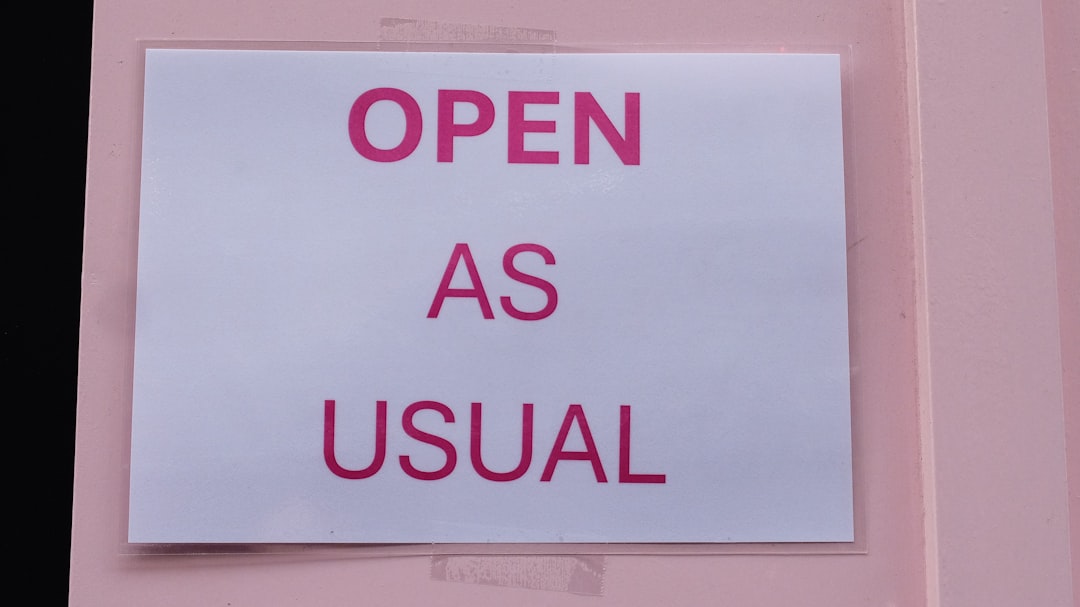How Font Point Sizes Impact OCR Accuracy
How Font Point Sizes Impact OCR Accuracy - Standard font dimensions for machine readability
Grasping standard font dimensions is fundamental for machine readability, particularly concerning Optical Character Recognition (OCR). While there's some variation depending on the specific OCR engine or system, consistent formatting is broadly beneficial. Font size is a primary factor; guidance often suggests minimums, like starting around 12 points, with 14 points frequently cited as optimal, although excessively small text lacks the necessary detail for pixel-based recognition, and conversely, characters that are too large can fall outside typical processing parameters. Mixing font sizes within a single line is generally problematic and should be avoided. Regarding typeface choice, standard, easily readable fonts like Arial or Times New Roman consistently yield better results compared to more elaborate or unusual designs that complicate character identification. These seemingly technical details hold significant sway over the efficiency and accuracy of AI translation pipelines reliant on high-quality text input.
Here are some observations regarding standard font dimensions and their impact on machine readability:
1. A key historical note is the development of specific, geometrically defined typefaces like OCR-A and OCR-B. These weren't just fonts; they were engineering specifications where character shapes, stroke widths, and inter-character spacing were precisely controlled purely to ensure predictable, high-accuracy recognition by early optical readers, predating today's flexible AI systems.
2. Curiously, the relative size of a font's internal features – particularly the height of its lowercase letters relative to its capitals (the x-height) or how much space a character's strokes fill within its total height (bounding box) – often seems more critical for robust recognition than the nominal point size alone. Systems can struggle if crucial identifying parts of common characters are too small in pixel terms, regardless of the overall font scale.
3. Maintaining consistent and sufficient minimum spacing between characters and words remains surprisingly fundamental. Modern OCR engines, for all their advancements, still rely heavily on these dimensional gaps to correctly segment the image stream into individual characters and words before attempting recognition, acting as essential digital dividers.
4. While imperceptible to the human eye or even aesthetically pleasing, small variations in stroke thickness *within* a single character can introduce ambiguity during the critical initial stages of image processing, such as binarization. This inconsistency complicates the system's task of defining clean character boundaries.
5. In specific controlled environments or with older scanning hardware, fonts where every character occupies a fixed horizontal width historically provided higher reliability. This dimensional predictability allowed the machine to simplify the task of locating characters by effectively using a grid system, highlighting how rigid spatial consistency aids deterministic processing.
How Font Point Sizes Impact OCR Accuracy - How size inconsistency introduces recognition errors
Varying font sizes within a document present a significant obstacle for optical character recognition systems. When text appears at inconsistent scales, the engine's task of accurately identifying and capturing each individual character becomes notably more complex. This lack of uniformity directly contributes to recognition errors. For example, characters rendered too small can easily fall below the sensitivity or resolution limits of the OCR system, leading them to be missed entirely. Conversely, text that is disproportionately large can sometimes distort processing parameters or exceed the expected bounding boxes, also resulting in decreased accuracy or misinterpretations. The core issue is that scale inconsistency disrupts the system's predictable analysis of character shapes and relationships, making the extraction of reliable text data, a crucial step for subsequent processes like AI-powered translation, considerably less dependable.
Here are up to 5 observations on how variability in point size introduces recognition errors:
1. Intriguingly, even contemporary OCR algorithms designed with scale invariance in mind struggle notably when confronted with abrupt, significant shifts in point size within a tight visual proximity. This volatility undermines their capacity to apply fine-tuned, local models for character pattern matching, having been trained on more consistent input blocks.
2. The swift change in character scale often confuses the vital segmentation step. Algorithms tasked with partitioning the text line into discrete characters operate under implicit assumptions about predictable spacing and bounding box relative dimensions. When these spatial cues are violently disrupted by size shifts, mis-segmentation – merging adjacent letters or splitting single ones – becomes a common failure mode.
3. One might assume AI handles anything, but these models frequently exhibit peak performance within specific scale envelopes, learned implicitly during training. Introducing text that deviates sharply in size from surrounding content, driven by inconsistency, forces the model to operate outside its comfortable, high-confidence zone, resulting in demonstrably lower recognition certainty and elevated error rates.
4. Variability in font size directly undermines the reliability of extracting fundamental geometric features – those corners, curves, and endpoints that are crucial for character classification. As scale shifts, the pixel representation of these features can become inconsistent or less clearly defined, making the task of accurately matching them against known character prototypes considerably more challenging.
5. Perhaps most critically, the recognition inaccuracies born from size inconsistency don't occur in isolation. They inevitably propagate downstream, polluting processes like word formation and subsequently hindering sophisticated language model corrections. This diminished input quality directly compromises the capacity of AI translation systems, which rely heavily on clean text and reliable contextual cues, to produce accurate output.
How Font Point Sizes Impact OCR Accuracy - The impact of character scale on automated text processing
Variability in character sizing presents a persistent challenge for automated text processes like optical character recognition. Despite advances, OCR engines demonstrably struggle when characters aren't consistently scaled within a document or section. This inconsistency can significantly degrade the fidelity of the captured text, leading to misinterpretations and errors that propagate through to subsequent data processing stages. The lack of uniform scale complicates the core pattern recognition task, making the overall text extraction workflow less reliable than necessary for high-quality outcomes. Consequently, understanding and managing character scale remains essential for achieving dependable input quality for tasks such as rapid machine translation.
It's worth noting some less intuitive impacts of character scale on the automated pipeline:
It's a fundamental challenge that the actual pixel-based 'definition' available for a character is determined by the interplay of its physical size and the scanning resolution; characters that appear large on paper might still be represented by only a sparse handful of pixels if scanned poorly, creating a bottleneck right at the input stage for text recognition destined for AI translation pipelines.
Intriguingly, the negative impact of even minor image imperfections like subtle skew or rotation appears disproportionately amplified when character scales are very small. This geometric distortion complicates the crucial initial image cleanup and character localization steps far more than it does for larger text, introducing errors early in the OCR pipeline.
Analysis shows that image noise, present in almost any scan, occupies a significantly larger *relative area* within the bounding box of a small character compared to a large one. This effectively lowers the signal-to-noise ratio at the character level, making it harder for the OCR engine to reliably extract shape features needed for robust text capture, a prerequisite for quality machine translation.
From an algorithmic perspective, processing characters at vastly different scales often seems to require shifting parameters or even engaging distinct internal processing logic within modern OCR models. Forcing the system to constantly adjust or switch these approaches on the fly due to scale inconsistency can reduce computational efficiency and lower the model's overall confidence score for recognition, impacting the speed and accuracy of downstream AI translation.
A persistent hurdle is that many of the subtle visual features that a human eye (or a robust OCR model at larger scales) uses to differentiate characters – like the presence or shape of serifs, minute stroke thickness variations, or the precise closure of a loop – simply vanish into indistinguishable pixel noise as character scale decreases. This loss of discriminative detail increases the likelihood of misclassification, adding noise to the text provided for translation.
How Font Point Sizes Impact OCR Accuracy - OCR engines struggle with minimal font details
Optical Character Recognition systems encounter considerable difficulty processing text when character forms possess minimal inherent graphical definition. This challenge arises not just from overly small point sizes but also from typefaces that lack clear, distinguishing features between visually similar characters or employ complex, thin strokes. This lack of precise detail within the font glyphs directly impedes the engine's ability to reliably differentiate and classify characters, leading to recognition inaccuracies that inevitably degrade the quality of the extracted data. When text is very small, especially with limited image resolution, the critical visual cues needed for robust identification simply fail to manifest in sufficient detail. Conversely, fonts with artistic or unusual shapes, while aesthetically pleasing to humans, often present ambiguous patterns to automated systems. This fundamental hurdle in capturing faithful character geometry injects errors into the text stream, potentially undermining downstream applications like automated translation, which critically depend on accurate, noise-free source text. The fineness and clarity of font detail are thus a critical factor bottlenecking reliable automated text capture.
Even sophisticated algorithms encounter significant hurdles when confronted with text designs featuring exceptionally thin strokes or minimal contrast against the background; the visual information needed to reliably differentiate character shapes becomes too ambiguous for consistent classification.
A peculiar challenge arises during the fundamental step of converting a scanned image to black and white (binarization): subtle font elements, such as fine serifs or narrow internal spaces, can be inadvertently lost or distorted if their grayscale intensity is too close to the determined threshold, effectively erasing visual cues critical for character identification.
Automated text recognition systems often falter with typographic instances like ligatures or where printing artifacts cause characters to be visually joined; this lack of standard spacing and the deviation from expected discrete character shapes complicate the essential processes of segmentation and individual character recognition.
Accurate character identification frequently depends on correctly interpreting minute visual cues—the precise shape or closure of a loop, the presence of a tiny accent, or a subtle break in a stroke. When document quality or font style renders these minimal details indistinct, systems are prone to confusing characters that otherwise appear similar.
Furthermore, noise inherent in the source document or introduced during scanning appears to compound these difficulties; the system may misinterpret random pixel patterns as valid character features or, conversely, mistakenly filter out actual faint design elements while attempting to suppress noise, demonstrating a persistent struggle to distinguish signal from visual static.
More Posts from aitranslations.io:
- →AI Translation Breakthrough Accurately Converting Cuántas onzas en un kilo Across Languages
- →AI Translation Breakthrough Converting Astronomical Distances from Meters to Gigameters in Scientific Texts
- →AI Translation Breakthrough Decoding Chemical Formulas and Molar Masses
- →How AI Translation Tools Ensure Accuracy in Chemical Formula Documentation A Focus on ClF5 Mass Calculations
- →美加 Translation Company Integrates AI-Powered OCR for Faster Document Processing
- →Decoding Sound Data: Why AI Translation Relies on Decibel and Intensity Calculations

